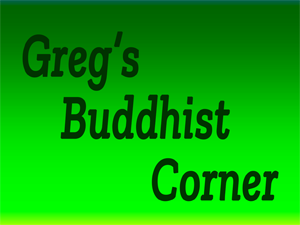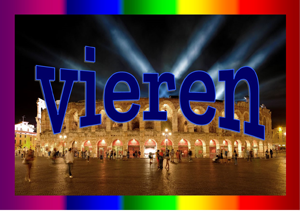The Life of the Buddha – Buddhist Icons on Exhibition
At the Nieuwe Kerk in Amsterdam till 3/2/2019
By Greg Suffanti, photos by Robin Irwin
QFWF, 30 November 2018
The Ultimate Guru is Yourself His Holiness the Dalai Lama
I’ve lived in Amsterdam since the beginning of this century, and formally renounced my American citizenship in 2008, becoming a naturalized Dutch citizen.
There are countless things I love about my “new” life in my adopted homeland… the weather, however, has been a bit more of a struggle.
One of the reasons I became a Buddhist is because of Buddhism’s positive, non-secular messages about self-help and the endless possibilities of achieving all kinds of happiness. I am inspired by this message, and Buddhism’s tool chest of teachings and techniques have helped me through depression and serious illness. 20 years on, I’ve also seen how Buddhism has helped others as well. You don’t need to be a Buddhist to use Buddhist techniques to help yourself… simply an open mind.
Just seeing images of the Buddha can leave a positive imprint and be helpful to the mind, possibly even inspiring one to look further into this ancient religion.
The exhibition seemed a bit expensive without a museum card
“The Buddha’s Life, Path to the Present”, currently on exhibition at the Nieuwe Kerk in Amsterdam until 3 February 2019, tries to offer both a historical and a contemporary look at the life of the Buddha, Shakyamuni, who lived some 2,600 years ago.
There are impressive stone, bronze and gold statues on display, as well as contemporary pieces from artists like Ai Weiwei and Yoko Ono. Two contemporary Dutch artists, Salvatore Breed and Koos Breukel, are also represented.
In total, there are about 60 objects on display in this vast space, many of them small statues, so I must agree with some of the reviewers that the exhibition seemed a bit expensive at 17.50 Euros, or, 2.50 Euros with a museum card. A free audio tour is included. (If you speak Dutch, the audio tour features an enthusiastic Erika Terpstra to help guide you around.)
 |
 |
 |
|
Ai Weiwei, Tree, 2010, Lisson Galery, London |
Kohei Nawa, PixCell-Deer#55, 2018, mixed media, courtesy of the artist and Pace Gallery, Hong Kong |
large meditation area |
One enters the exhibition through finding the openings in what are layers of curtains, as though one were peeling away one’s layers of confusion, to enter what is essentially the physical center of this large church, now dominated by Ai Weiwei’s “Tree” (2010) and Kohei Nawa’s “Pix-cell-Deer#55” (2018). The tree is symbolic of the Buddha’s attaining enlightenment under a Bodhi tree, and the deer, Shakyamuni’s first teaching at Deer Park, near Sarnath.
Mr. Wei Wei, using bare branches in his construction, also references China’s relentless urbanization and growth. Adjacent to the “Tree” and “Deer” is a large meditation area, defined by large, sheer-white curtains hanging to about 2 meters above the floor; and completing the space are orange mats and black cushions to sit upon.
I’ve been several times to the exhibition and have always seen the space being used. If you’re looking for a bit of peace and quiet from the busy city, then try a weekday afternoon when the visitor numbers are at their lowest. It is possible to sit quietly and just meditate, leaving the bustle of Amsterdam (mentally) outside.
Awareness of the here and now is not specifically Buddhist
The show’s program asserts that,
“the essence of Buddhism is enlightenment, attainable via a consciousness of the here and now.”
Actually, it is the calmed mind which allows insight and growth, which then allows one to travel the actual Buddhist path leading to full human development, or enlightenment.
Both the Theravada and Mahayana traditions follow the path laid out by Shakyamuni Buddha. Awareness of one’s own mind and environment and the present moment are important components in allowing this growth to take place.
However, just to be clear, an awareness of the here and now is not specifically Buddhist; all religious traditions which use meditation use these techniques.
Given the immense popularity of “mindfulness” training, you can’t blame the organizers for wanting to optimize this aspect of Buddhism, however, it over-simplifies Buddhism and taints it with the commercial trendiness of a multi-billion dollar business.
So, I wasn’t surprised to see the participation of the “Mindfulness Center” (whose team lead ongoing meditations for visitors): just disappointed that an exhibition about the life of the Buddha seemed to miss the mark from the word “go”.
Using a commercial enterprise, rather than say, Buddhist monks and nuns, who also could have talked about love and compassion, for example, (also essential to the Buddhist message) taints the whole undertaking and is exactly what the Buddha didn’t intend: commercialized religion. In fact, Buddhism’s appeal from day one was that being poor and low in society (then a caste system) didn’t mean you couldn’t achieve the level of a god.
Ostensibly, the show is about the life of the Buddha. In reality, the viewer would be hard pressed to draw the same conclusion. There’s a large board at the ‘entrance’ inviting the viewer to explore the life of the Buddha, and a few small boards with scant information about the Buddha’s life and death spread throughout the rest of the exhibition.
There are a few boards about mudras, or hand gestures, and also a few descriptions of some of the statues.
However, there is no coherent feeling to the show, and for example, Yoko Ono’s “Three Mounds” (2018) sits oddly in a corridor-like space and represents regions in which women have experienced a lot of suffering.
What kind of connection should we make? We are not told. There is a row of prayer wheels lining the wall opposite Yoko Ono’s “Three Mounds” and we are told that they are indeed prayer wheels, made by children. We are told traditionally that they are filled with mantras. We are however, not informed what a mantra is. This misses the whole point.
Equanimity is the answer
By contrast, Carolee Schneemann’s “More Wrong Things”, (2000-01), does offer the viewer a possible connection to the suffering images seen on a room full of television screens and Buddhism’s teachings. The information plaque reads,
“In Buddhism, facing suffering, physical pain and all that we reject, is seen as the best exercising tool for self-awareness and the development of a consciousness free from rejection and judgement.”
Aside from the fact that this statement is poorly written, it is by no means fully accurate. Buddhism teaches that it is our constant grabbing after desirable objects and rejection of things we don’t want, combined with our indifference to a third set of conditions that causes our mind to be in a constant state of agitation. Equanimity, an evenness of our mind, which we cultivate through meditation and insight, is the answer.
Just facing our pain offers no real (Buddhist) solution. Buddhism is a religion about solving one’s own problems. The Buddha himself nearly starved to death only to realize the middle-way approach, avoiding all extremes.
Each statue has a story to tell
I enjoyed the exhibition when I let go of my disappointment with its size and seeming lack of continuity, and began looking at the beautiful objects on display.
Each has its own story to tell about Buddhism and the culture of the people who made it.
The juxtaposition of Buddhist images in a Christian setting is dramatic and exciting. The Nieuwe Kerk itself, finished in 1408, is a glorious structure and worthy of a visit on its own.
I found Tatsuo Miyajima’s “Counterline” (2018), with its 98 digital light emitting LED dials, and randomly changing numbers, a nice metaphor for death, birth, re-birth and enlightenment. For Miyajima, the ‘0’ is death. And there are quiet spaces to be found, especially on weekdays. In my experience, it was never so busy as to not be able to enjoy every single object. If you allow yourself to spend some time with the statues and be in their peaceful presence, well, in my opinion, they seem to have a power of their own to help calm and subdue the mind. This alone made my visits worthwhile.
Should you decide to go, don’t forget to circumambulate the statues, meaning to walk clock-wise around a holy object. From the Buddhist perspective, this creates additional positive karma or energy. However, just seeing the Buddhist images creates positive karma.
According to Lama Zopa Rinpoche,
“it is said in the sutra teachings, that even if we look at an image of the holy body of the Buddha, the One Gone to Bliss, with a disturbed or angry mind, we will eventually see 10 million Buddhas.”[1]
 |
 |
 |
|
Tatsuo Miyajiima, Counterline, 2018, courtesy of the artist |
|
Prayer wheels made by Dutch students and patterned after Tibetan prayer wheels |
I wish I could whole-heartedly recommend this exhibition. If you’ve got a museum card and only have to pay an additional 2.50 Euros and can go during the weekdays, I think you’ll find an oasis of calm and some beautiful Buddhist statues. Have a cup of coffee in the museum’s café and you’ve got a pleasant afternoon in Amsterdam.
If you’re looking for something dynamic and visually spectacular, you’d be better off spending the 17.50 Euros at the Rijksmuseum.






















